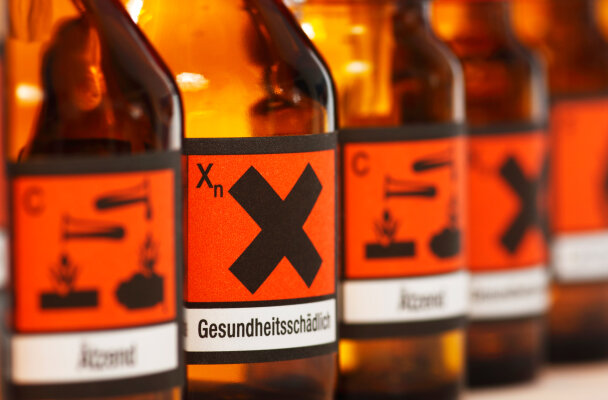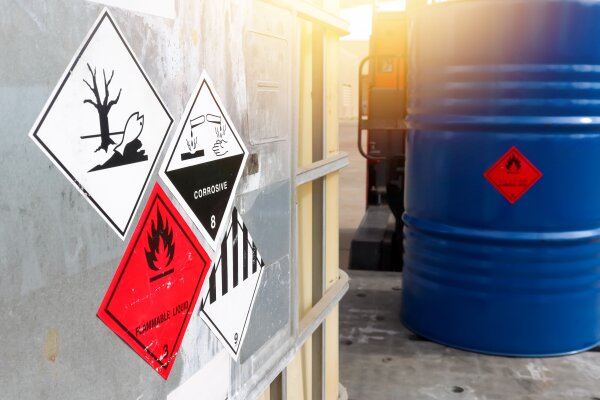Calculate titration – how to make the measurement successful

To be able to determine the concentration of a solution, one can calculate the so-called titration. The principle is always the same – but the actual procedures and reaction types can differ. In this blog post, we have summarized which terms are important with regard to titration, how the calculation works and which alternatives come into question.
Titration – what is it?
If a titration is mentioned, it is a procedure for determiningthe concentration of a solution. This method of titration calculation has been used for a very long time. It is based on the principle that an unknown concentration of a substance in an aqueous solution can be determined by adding a known concentration of another substance. Care must be taken that the titration is carried out in a certain way. Via titration, the concentration can be calculated quite easily.
Theareas of applicationfor this process are wide-ranging. Of course, titration is primarily used to determine more precisely the contents of vessels in the laboratory on which the substance concentration is not indicated (and consequently must first be calculated). This method is used for:
- the monitoring of environmental processes,
- Soil and water analysis
- as well as in the production of medicines and foodstuffs.
Important terms for titration calculation
The calculation of titration is based on chemical facts, so the knowledge of some important terms and conceptsis necessary in the description. The following list serves as a brief refresher:
-
Equivalence point:The equivalence point or end point is the moment in the titration at which the two reactants are present in an equivalent quantity. In an acid-base titration, this corresponds to the point at which the acid and base have exactly the same amount, i.e. the chemical titration formula: n(NaOH) = n(HCl).
- Buffer point: Halfway to the equivalence point, however, there is first the buffer point or half-equivalence point at which the concentrations of the acid and the conjugate base are exactly equal. According to the Henderson-Hasselbalch equation, the following applies here: pH = pKS.
- Indicator: The indicator is responsible for the color change, so it should be as close as possible to the equivalence point. While bromothymol blue is often used for the combination “conc and strong base”, phenolphthalein is more commonly used for weak bases.
- Turnover range: The indicator changes color in a specific, known pH range, which is called the turnover range.
- Degree of titration:The degree of titration finally indicates the quantitative ratio of the titrated substance to the titrant.
Titration: calculation simply explained
In order to be able to calculate the titration, attention must be paid to the choice of indicator, the course of the process and the curve. Depending on what kind of acid-base pairs are involved, different formulas are also used. Therefore, some basics are necessary before you can really calculate the concentration with titration.
Choice of the indicator
At the top of the list is the choice of indicator. This produces the color change that makes the reaching of the equivalence point visible. It is important that the turnover range is in the pH range of the vertically ascending branch of the titration curve, which is why the same indicator is not always ideal.
If a strong acid is titrated with a strong base (think of our example of hydrochloric acid and sodium hydroxide solution), several indicators come into question. Common examples are methyl orange (envelope range between 3 and 5 pH) or bromothymol blue (envelope range between 5.8 and 7.6 pH), since the color change occurs near neutral pH.
For weak acids, on the other hand, phenolphthaleinis suitable (turnover range between 8.2 and 10 pH). Methyl orange would already turn over before the equivalence point, resulting in an erroneous result.
Titration with hydrochloric acid & sodium hydroxide solution
The most common acid-base pairs for a titration include hydrochloric acid (HCl) and sodium hydroxide (NaOH), which are a combination of strong acid and strong base. While hydrochloric acid has a pH value of around 1, that of caustic soda is around 14 – the substances are therefore at different ends of the scale.
If one now wants to calculate the titration, a known concentration of the acid or base is dripped into an unknown concentration of the counterpart and an indicator is added to observe the color change. The more substance is added to the measured solution, the more neutral the sample solution becomes – but only up to the equivalence point.
The equivalence point is pH 7. Once this is reached, it can be assumed that the concentration of both substances in the solution is exactly the same. This can be deduced chemically both from the course of the titration curve and from the corresponding formula.
Course of titration curves
Speaking of the titration curve, this also does not always look the same and depends on the acid-base pair. When you calculatethe titration curve, you can read off the initial pH value as well as the equivalence point, the neutral point and the possible buffer range. The extent to which these points lie together is determined by the strength of the acid or base:
Strong acid or base: Here the equivalence point and neutral point coincide, so that there is only a single inflection point in the titration curve. A strong pH jump occurs in this area.
Weak acid or base: With weak acids, this jump is not as pronounced. Also, the neutral point is not the same as the equivalence point, since the latter is in the basic range for weak acids and in the acid range for weak bases. The curve shows a second turning point, which is located at the point “pKS – value.
Calculate titration curve: strong acid & strong base
Hydrochloric acid and sodium hydroxide are a pair of strong acid and strong base, which is why the equivalence point on the titration curve corresponds to the neutral point (at pH 7). The initial value is pH 1 or pH 14 – depending on which solution the concentration is known from. When calculating the titration curve, the line therefore does not start at 0, but at the corresponding pH value. This knowledge is important to be able to read the titration curve correctly.
When titrating a strong acid with a strong base, there is initially only a minimal rise in the titration curve, which extends to the equivalence point. Only there the curve rises abruptly and runs almost vertically at the turning point. Shortly after the neutral point, it flattens out again almost completely.
Titration: Formula
Now we have to calculate the titration. Several calculations must be used as the basis for the titration formula. The base is provided by the neutralization equation of the acid-base pair, which for hydrochloric acid and sodium hydroxide is as follows:
| NaOH + HCl ? NaCl + H2O |
The equivalence point is reached when the substance concentrations are exactly equal, i.e. at:
| n(NaOH) = n(HCl) bzw. n(HCl)/n(NaOH) =1 |
The quantity you are looking for can be found quite simply by using the titration formula:
| c(HCl)=n(HCl)/V(HCl) |
For comparison: If the example were a titration of sulfuric acid and sodium hydroxide solution, the appropriate neutralization equation would look like this:
| 2 NaOH + H2SO4 ? Na2SO4 + 2 H2O |
The complete conversion would result in a molar ratio of 1:2, and from this the result:
| n(H2SO4)=(n(NaOH) )/2 |
The amount of substance is therefore calculated from:
| c(H2SO4)·V(H2SO4)=(c(NaOH)*V(NaOH))/2 |
Titration: Calculation
If the titration is carried out according to the above titration formula, the calculation can be carried out according to a principle that is always the same. The following calculation example calculates the titration with hydrochloric acid and sodium hydroxide solution, more precisely: 100 milliliters of hydrochloric acid with unknown concentration and sodium hydroxide solution with 0.1 mole per liter. In the process, 0.05 liters of sodium hydroxide solution were added until a color change occurred:
-
Set up equation: For the stoichiometric calculation, the reaction equation must first be established. Hydrochloric acid and sodium hydroxide belong to the strong acids and bases, respectively, which is why the equation is as follows: NaOH + HCl ? NaCl + H2O
-
Determine quantity ratio: The quantity ratio is also easy to determine in this case. Thus, at the equivalence point, the amounts of acid and base must be exactly equal, which is why: n(NaOH) = n(HCl)
-
Conversion of the known quantity: Based on this quantity ratio and the known concentration of sodium hydroxide solution, the quantities can be converted into the quantity of substance. This looks like this: n(NaOH)=c(NaOH)*V(NaOH)=0.1 mol/L*0.05 L=0.005 mol=n(HCl)
-
Calculation of the amount of substance: In this calculation step, we can again fall back on the fact that the concentration of strong acid and strong base must be 1:1, i.e.: n(HCl)/n(NaOH) =1
-
Determine the required quantity: Consequently, both the volume and the amount of substance of hydrochloric acid are now known, which is why only the calculation of the concentration is missing. For this purpose, the formula c(HCl)=n(HCl)/V(HCl) can be used, which finally looks like this in the finished equation: 0.005mol/0.1L=0.05 mol/L
- Observe the titration curve: The corresponding equivalent value or zero point can also be read off from the titration curve. It is at the inflection point, because there the amount of substance of the acid has been neutralized by the corresponding amount of substance of the base.
- Determine the end point: If a strong acid was titrated with a strong base (as is the case here in the example), the equivalence point is at the neutral point, which is at pH = 7. In the case of a weak acid or a weak base, on the other hand, two inflection points can be observed in the titration curve. This also means that the equivalence point and the neutral point are not the same.
Calculate titration: Alternatives
If you want to calculate the titration, the determination of the end point is the method of choice when it comes to the complete neutralization of the substance. So far, however, only the determination of the equivalence point with an indicator solution (i.e. with a color change) has been discussed. In fact, there are alternatives that can be even more accurate.
Potentiometric titration with pH meter
To calculate the titration, the potentiometric method can be used: Here, a measuring electrode is used to determine theelectrochemical potential of the solution. The basis for this is the Nernst equation, according to which the solution can be regarded as concentration-dependent.
By adding the dimensional solution, the concentration of the sample solution is reduced again step by step, while at the same time the voltage is measured with the electrode. When the end point is reached, there is an abrupt change in the voltage, from which the equivalence point can be recognized.
Conductrometric titration
Another practical way to calculate the titration is conductometry. Here, analternating currentis applied, which in turn is determined with a measuring electrode. From this, the electrical conductivity or resistance can be determined, which also changes when the end point is reached.
However, the basic prerequisite for this method is that the measured substance is present as an ion in the solution so that the alternating current can be transmitted via diffusion. By adding an acid or base, the conductivity slowly decreases because fewer charge carriers are available in the solution. From the equivalence point, it increases again sharply.
Automatic titration
Automatic titration can be regarded as a further development of the pH meter method. The pH value can be determined electronically with a computer by adding the titration liquid automatically by the system instead of manually.
This enables not only complete automation, but also accurate measurement results and direct further processing of the results. For example, conversion to a concentration value is possible without an intermediate step.
Titration with different reaction types
In addition, a further distinction can be made in substance analysis with the aid of titration – namely between the previously mentioned acid-base titration and between other substance groups. Thus, titrations can also be differentiated based on the chemical reaction that is being run. Known reaction types include the following:
Redox titration
Redox titration can also be used to calculate titration: it represents a specific form of titration in which oxidizable and reducible substance contents in the substance are determined. For this purpose, the solution is brought to a reduction with a (oxidizing or reducing) dimensional solution until it disappears or an excess of dimensional solution is observable. Common methods are, for example, bromine atometry, iodine atometry or manganometry.
Precipitation titration
Here, too, the name says it all – in precipitation titration, a dimensional solution is added until a precipitation reaction occurs. This is detectable by a precipitate in the solution, and in some cases dyes are added for better detectability. A common precipitation titration is the reaction of silver ions and chlorine ions (according to Gay Lussac and Liebig), resulting in a milky precipitate.
Complexometric titration
Complexometric titration or chelatometry, on the other hand, is a method of analytical chemistry. It is primarily used for the quantitative determination of metal in an aqueous solution. In order to use this to calculate the titration, an indicator is used which is optically different in the free state from the form bound to metals. The addition of the chelating ligand releases it, changing the color of the solution.
Calculate titration with formula and titration curve
Although there are different methods and types of reactions, titration is always used for a given purpose. And that is to determine the concentration of a substance in a solution. If you pay attention to an optimal procedure including formula and titration curve, you will get the right result quickly and easily when calculating the titration.
FAQ
The titration curve is calculated by dropping the measuring solution with known concentration stepwise into the sample solution. After each addition, the pH is redetermined so that the curve can be drawn up from the correlation of the addition in milliliters and the corresponding pH.
The end point or equivalence point is reached when the concentration of the measured solution corresponds to the concentration of the sample solution. Depending on the titration method, this point is indicated by a color change, a precipitate or a voltage change.
The half-equivalence point or buffer point is located at the point where the concentrations of a strong acid and a conjugate base or a strong base and a conjugate acid areexactly equal. There, pH = pKS applies.
From a titration curve, the amount of substance, the associated pH value and the resulting equivalence point as well as the neutral point and the initial pH value can be read. Depending on the acid-base combination, the buffer range and the pKS value can also be detected.
Do you have questions about the topic or would you like to suggest a topic? Please feel free to contact us by phone at +49 30 2096579 00 or send us an email to info@medsolut.com.




